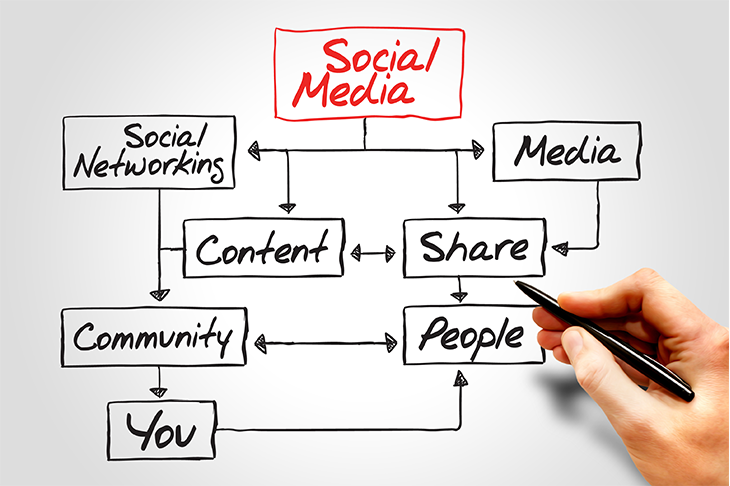
Get weekly
HubSpot updates
You think you should be on social media
One of the most common reasons we see businesses joining social these days is because they think they ‘should’ be there. The situation usually starts with a not-so-tech-savvy decision maker who has recently caught whiff that a competitor is (rightly or wrongly) on a social media platform, and therefore their business should be too.
Far too often this ends with said decision maker picking out a ‘young person’ who ‘gets that stuff’ to take over the social media marketing. Sure, that young guy who makes the tea might have a Facebook page, but that doesn’t automatically make him a social media marketing mastermind.
Digital marketing is complex and far more than just ‘social media’. Sure, social is a huge part of the experience, but there’s far more going on behind the scenes that the end user is frankly oblivious to. Roles are constantly being developed and opened across the digital space, from SEOs who work to increase a site’s search rankings, to social media strategists whose job it is to constantly unpick the mysterious algorithms of social networks and create engaging content for a targeted demographic. Not quite as simple as just ‘sitting on Facebook all day.’
Social is a place to show your brand’s character. If your brand was a person what would they be talking about, what kinds of content would they enjoy, what tone of voice would they use? Frankly, if you’ve not got the time to dedicate to answering these questions, you don’t have the time to execute a strategy, and you're better off not appearing on any channels than with a half hearted attempt. Quality over quantity, always.
Alternatively, if that previously mentioned decision maker needs a nudge to send some funding your way, you might want to check out our blog on convincing your boss you need a social media strategy.
You’ve not defined your audience or where they’re at
Different social platforms are saturated with different kinds of audiences. Everyone’s on Facebook, but if you’re appealing to B2B decision makers it’s unlikely they're going to want to engage with that content when they’re scrolling through their friend’s updates on a Friday night. That said, it’s more likely that a decision maker will be on Linkedin or Twitter on their lunch break. What I’m getting at here is, do your research! Really think about your content consumer and where they are in their day when you reach them.
Also, play to your strengths. If you’re a particularly visual brand, consider a platform that highlights graphics, for example Instagram. Got a lot of video content or how-to guides? YouTube.
I guarantee there’s a platform for you there somewhere, just take your time and don’t always copy your competitors, as they themselves might be executing a badly strategised digital marketing plan and you might be able to saturate a new market ahead of them because you took the time to consider your options.
You think social media is a sales tool
WRONG. So unbelievably wrong. But that doesn’t mean social media cannot facilitate a sale. Social media is a place where users go to relax, unwind and consume fun and engaging content. It’s a personal space as users tailor their feeds from pages they’ve liked, amongst content from their friends and family. Nobody likes to be sold to, but particularly when they’re in their down time. Adding a sales pitch into their feed whilst they're relaxing is going to leave you much like a door-to-door salesman - out in the cold without any leads.
The consumer buyer’s journey has been completely revolutionised with the introduction of digital. Users are more savvy than ever and conduct vital comparisons when they’re in the decision making stage. In this day and age, brands no longer sell products - they sell lifestyle ideologies supported by products. What better way to promote a lifestyle than with graphics, videos and a structured tone of voice? Social allows your brand to have a personality and engage in a two way conversation with the consumer - territory that traditional advertising hasn’t been able to set foot in.
There’s far more conversation between brand and consumer, thus greater opportunity to impress during their buying journey. By regularly presenting content to a user that’s targeted and fits within their interests on a timeline, you consistently impress and remain at the forefront of their mind. Your brand is reinforcing a positive image making the user feel like they understand you, and that they can relate or aspire to your brand’s ideology.
You talk too much/you don’t talk enough
We’ve all seen them, haven’t we? The brands that over share and constantly post hourly, or those that haven’t given you an update since Christmas 2014. Both look out of their depth and, frankly, amateur. On some platforms (looking at you Facebook!) there are complex algorithms in place that weight certain posts and their likelihood to engage a user. If you’re constantly promoting content, it’s unlikely a user will keep engaging with it, your engagement rates will drop and Facebook deems your content unpopular, penalising future posts’ reach accordingly.
On the other side of the coin, you have pages that rarely post. When they do eventually bother to update, Facebook recognises that users will have probably forgotten about you and your brand. Therefore any content you put out to them will be of less relevance to the brand they’ve interacted with for the past year. The quality over quantity rule certainly comes into play here too. Start with an update once or twice a week and build up slowly, monitoring your average reach per post as you do. If you see it start to drop, pull back a bit. Simple.
Your tone of voice is off
Last, but certainly by no means least, is that you're simply not communicating effectively.
As mentioned above, social is a great place to converse with your customers whilst they’re relaxed and engaged. Never use sales language like ‘buy now’ or a for a ‘limited time only’ as it automatically turns a user’s attention off and, again, on some social channels this type of language could lead to your content being penalised. Content should be engaging and relevant and this goes for your tone of voice too. Stay true to yourself though, If you’re a B2B keep it professional but if you’re targeting a youthful audience, keep it casual.
To conclude, if you’re going to put together some sort of a social media strategy, make sure it’s considered and well targeted. Remember, it’s better to have a smaller strategy that’s well executed than trying to spread yourself too thin across multiple channels. Think you’re ready to start planning your first social media strategy? Take a look at our guide here.

